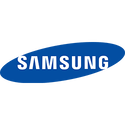
Samsung Exynos 2500 Benchmarks Put New SoC Close to Qualcomm Competition but Still Slower
Samsung's Exynos 2500 SoC has appeared on Geekbench, this time giving us a clearer indication of what to expect from the upcoming SoC that will power the next generation of Samsung flagship smartphones. There are three total runs that have appeared on Geekbench, putting forward anywhere between 2303 and 2356 points in the single-core Geekbench 6 benchmark and 8062 and 8076 points in the multicore benchmark. Meanwhile, the Qualcomm Snapdragon 8 Elite in the current-generation Samsung Galaxy S25 Ultra manages a single-core score of 2883 and a multicore score or 9518 on the same Geekbench 6 benchmark. Samsung recently made the Exynos 2500 public, with the spec sheet revealing a Samsung Xclipse 950 GPU paired with 10 Arm Cortex CPUs (1× Cortex-X5, 2× Cortex-A725 at 2.74 GHz, 5× Cortex-A725 at 2.36 GHz, and 2× Cortex A520 at 1.8 GHz).
The new SoC is reportedly the first chip to use Samsung's 3 nm GAA process, and leaks suggest that Samsung may be using the new SoC across its entire next-gen global smartphone line-up, starting with the launch of the Galaxy Z Flip 7. This would be a stark departure from previous releases, where the US versions of the Galaxy S line-up featured Qualcomm Snapdragon processors, with the international Galaxy S smartphones packing the in-house Exynos designs. In recent years, however, Samsung has pivoted to using Snapdragon SoCs across all regions.
The new SoC is reportedly the first chip to use Samsung's 3 nm GAA process, and leaks suggest that Samsung may be using the new SoC across its entire next-gen global smartphone line-up, starting with the launch of the Galaxy Z Flip 7. This would be a stark departure from previous releases, where the US versions of the Galaxy S line-up featured Qualcomm Snapdragon processors, with the international Galaxy S smartphones packing the in-house Exynos designs. In recent years, however, Samsung has pivoted to using Snapdragon SoCs across all regions.























































































